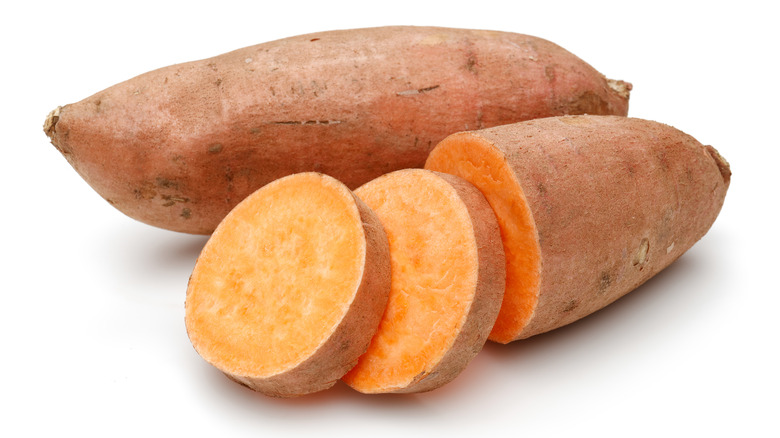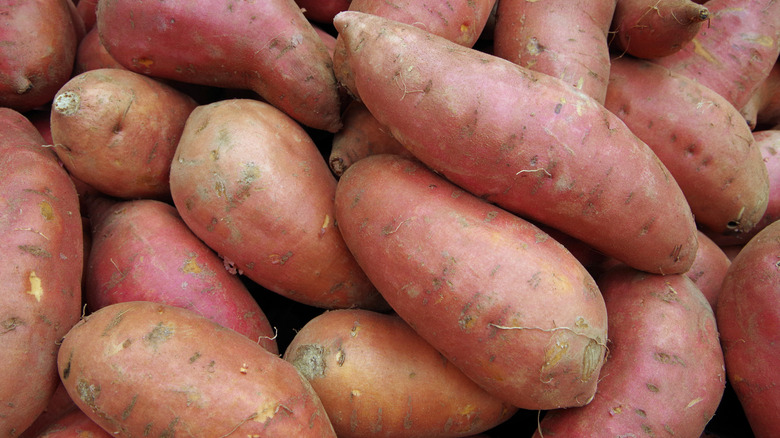How To Tell If A Sweet Potato Has Gone Bad
Over the last two decades, sweet potatoes have grown exponentially in popularity. They have shown up as alternatives to Americans' favorite french fries on food menus throughout the United States, for example. According to the Agricultural Marketing Resource Center, sweet potato consumption increased by 42% between 2000 and 2016. The organization attributes sweet potatoes' popularity to the public's growing appreciation of their health benefits, such as their stores of fiber and vitamins C and A.
With the love for sweet potatoes on the rise, the tubers are becoming a household staple in many recipes, from loaded sweet potatoes to various takes on comforting casseroles. Of course, when you have sweet potatoes on hand, it's important to know when they are no longer fit for consumption. The good news is that potatoes most likely won't cause great harm if eaten slightly past their prime (beyond an unpleasant taste and texture), though there is still a chance that toxic mold can grow on their surface, says Yahoo. Thankfully, there are plenty of ways to tell whether or not you should toss the tubers.
Check the sweet potato's color and smell
Sweet potatoes' skin and flesh range in color. They can be anywhere from white to red to brown, as well as a deep orange or purple, according to the Library of Congress. As Lucky Belly notes, different varieties of sweet potatoes will discolor in different ways, so the easiest way to recognize any change is to note the color of the potatoes when you first buy them. As you keep track, remember that any color change could indicate that the vegetable is aging and losing its quality and flavor.
A slightly clearer way to monitor the quality of your sweet potatoes is to give them a sniff. You may not have thought about it before, but raw, unpeeled potatoes typically don't have much of an aroma beyond some earthiness, says Healthline. So, if there's anything "musty" about their odor, err on the side of safety and discard them.
Check the sweet potato's texture and appearance
Beyond color, there are other aspects of a sweet potato's appearance that can be immediate signs that the starchy vegetable has seen better days. Feel its texture: Lucky Belly says ends that have softened and turned brown or black are a sign of spoilage. Plus, keep an eye out for wrinkles. If these appear on the potato's skin, it means that it has lost its moisture, rendering it unfit for use.
The most important thing to watch out for on a sweet potato is mold. If sweet potatoes are stored in a moist environment, their skin can develop mold in the form of aflatoxins, per The Kitchen Journal. Aflatoxins can be extremely dangerous and can cause liver damage or cancer in the long term, according to the World Health Organization. Check for any fuzzy dark spots or rot on the sweet potato, as well as its smell, for any indication of mold. If mold is present, even if it only seems to be on the skin, discard the potatoes immediately.


